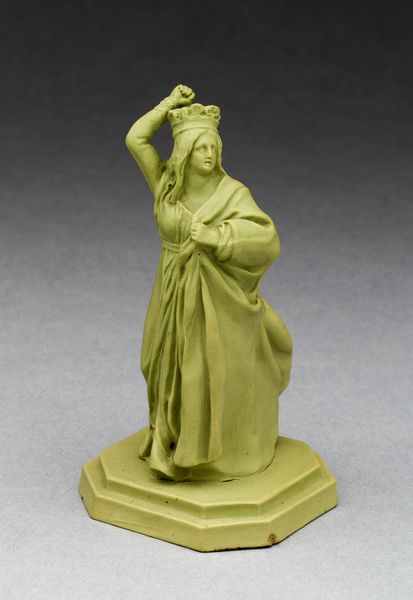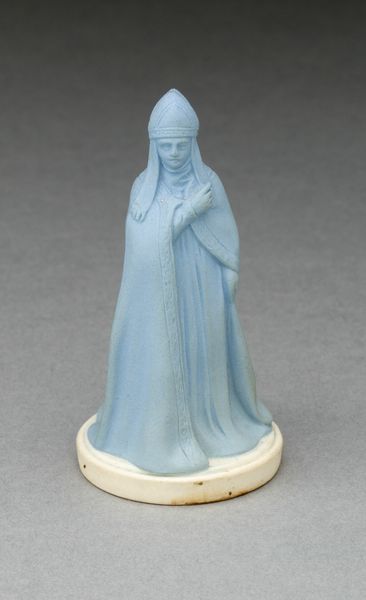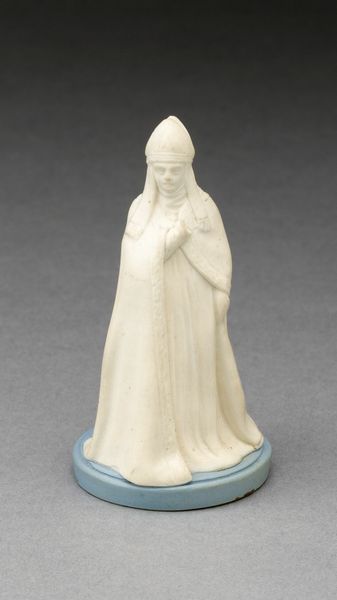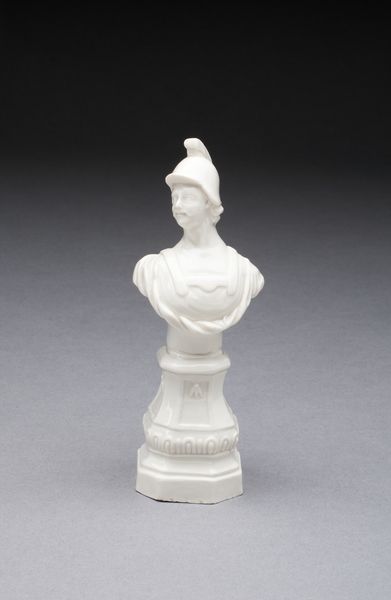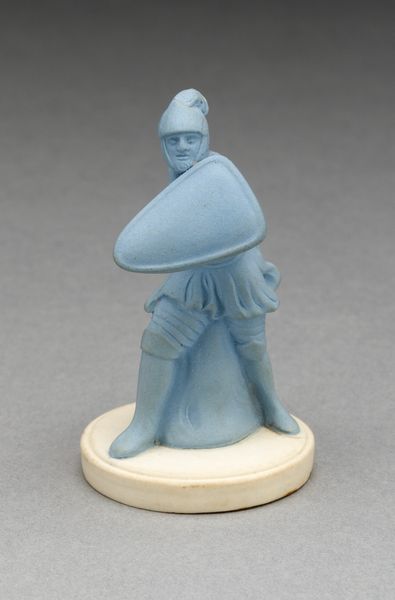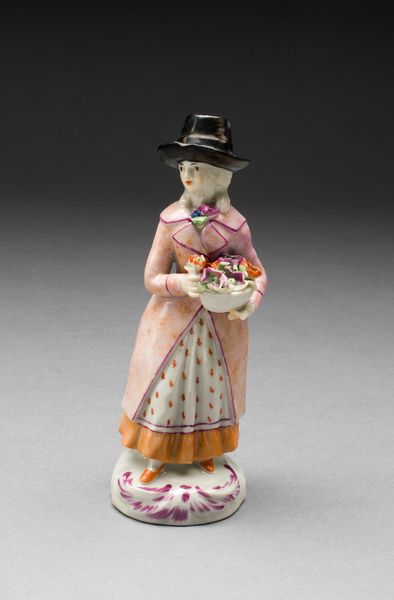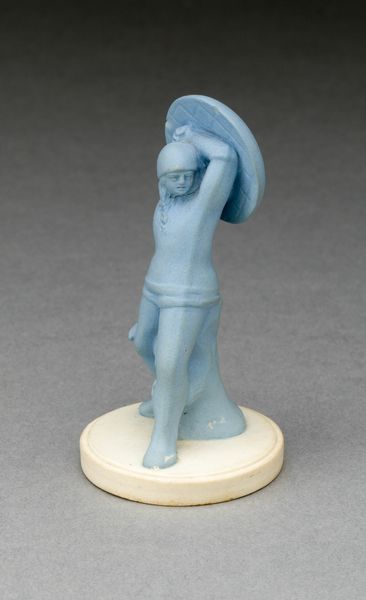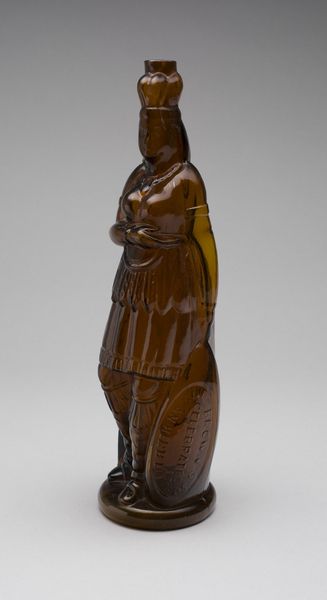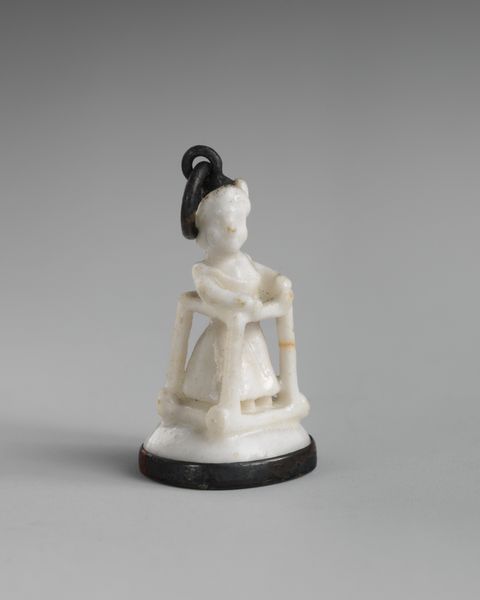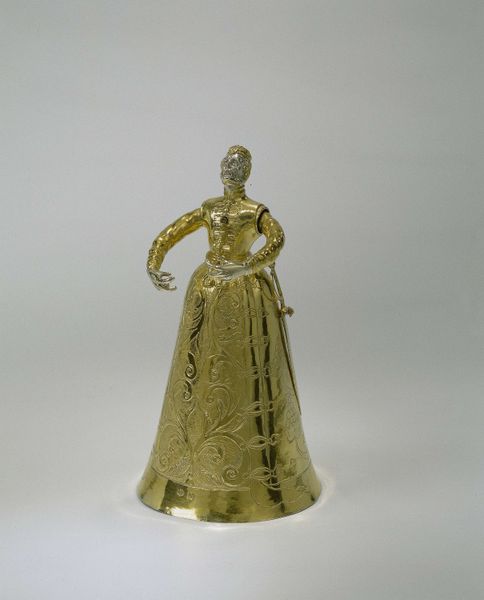
ceramic, sculpture
#
portrait
#
sculpture
#
ceramic
#
figuration
#
sculpture
#
decorative-art
#
miniature
Dimensions: 9.7 × 5.1 cm (3 13/16 × 2 in.)
Copyright: Public Domain
Curator: At first glance, the understated color palette gives this piece a rather ethereal quality. Editor: Absolutely. The figurine before us, entitled "Chess Piece: Queen," was crafted around the late 18th century by the Wedgwood Manufactory, employing ceramic. The muted, almost celadon green color is very striking. Curator: Wedgwood was an innovator! Looking beyond just the aesthetic appeal, we see that the production itself was groundbreaking, part of the broader industrial revolution reshaping England and the world through mass production. Editor: Indeed. And the specific choice of Jasperware for a chess piece? That connects it directly to Wedgwood's mission of elevating ceramic production. They strived to connect material experimentation with commerce. Note how smooth and refined it is. I wonder, what was the cultural importance of chess in 18th century British society? Curator: Well, chess wasn't merely a game. It signified intellect and strategic power—virtues strongly associated with the aristocracy and rising merchant class. This chess piece, then, isn't just decorative; it represents a carefully constructed identity. Editor: Exactly! We need to consider who was buying such items. Wedgwood carefully cultivated relationships with the upper echelons of society, and his items soon appeared as coveted luxury goods. But the very act of making pottery pieces—that labor, that intense heat—remains often unseen when we admire objects such as these. Curator: You're right to bring up those unseen laborers. In a broader sense, "Chess Piece: Queen" serves as a tiny reflection of enormous social change, commodification, class aspirations, and industrial labor. Editor: So, in viewing "Chess Piece: Queen," we might be tempted to merely admire the form, but its real significance resides within the interplay of materials, making, labor and societal forces of its time. Curator: Precisely. Its modest exterior belies the depth of what this chess piece represents. Editor: I agree; thinking about its complex production encourages us to ponder what lies beneath the surface in art.
Comments
No comments
Be the first to comment and join the conversation on the ultimate creative platform.
